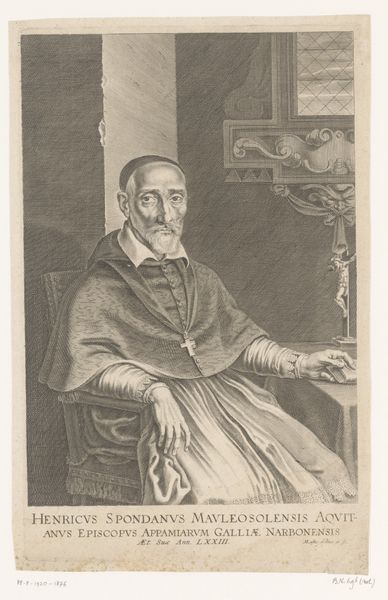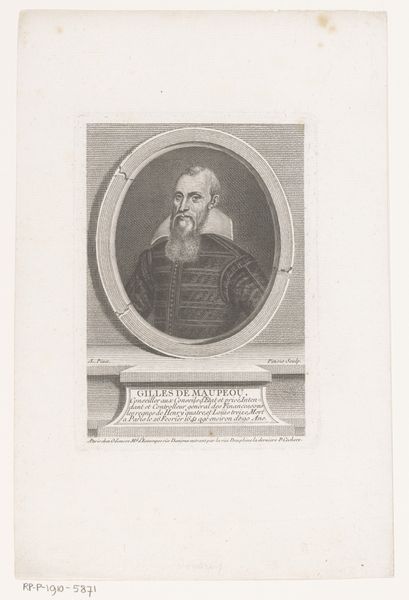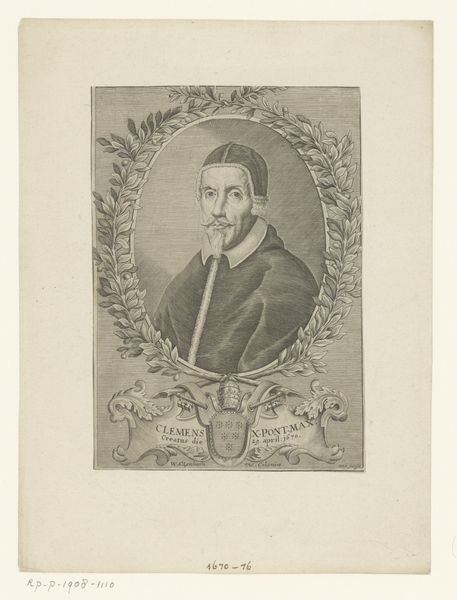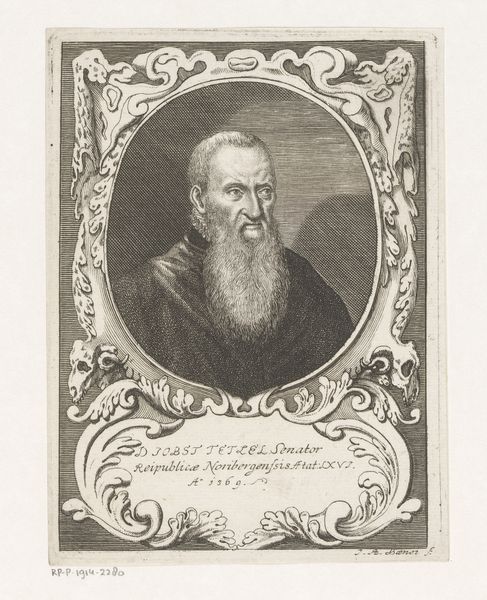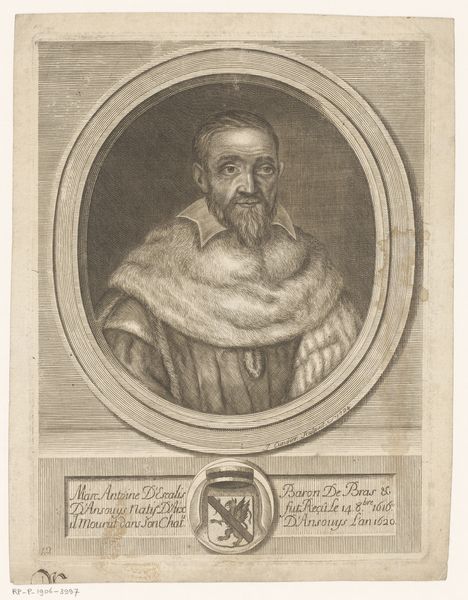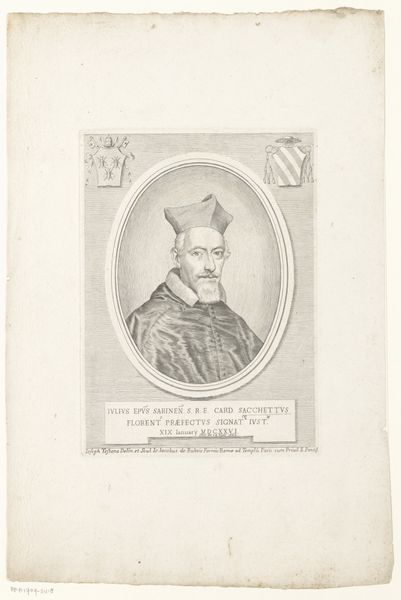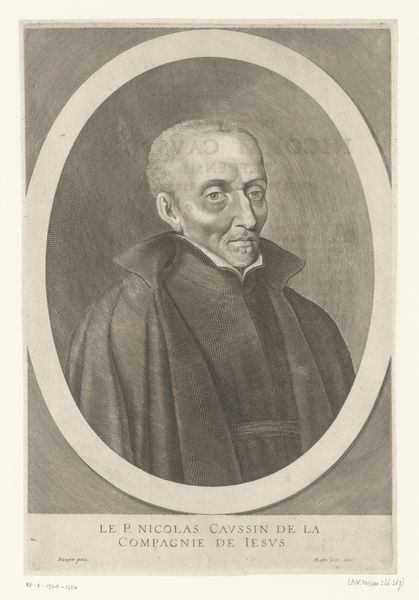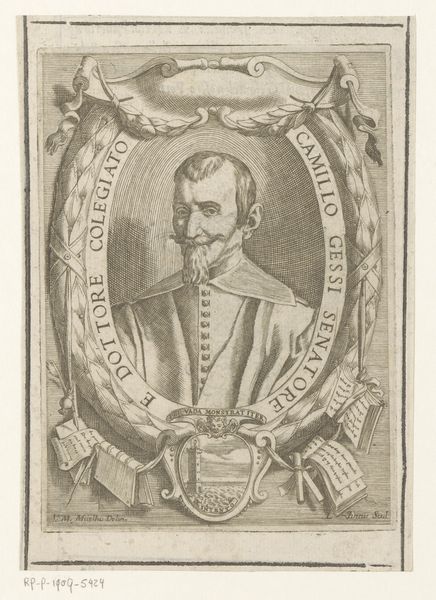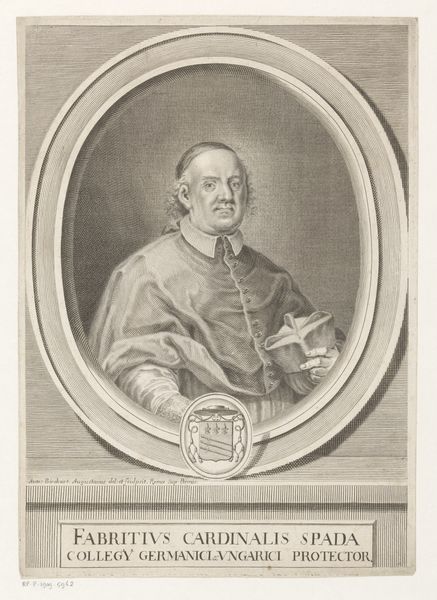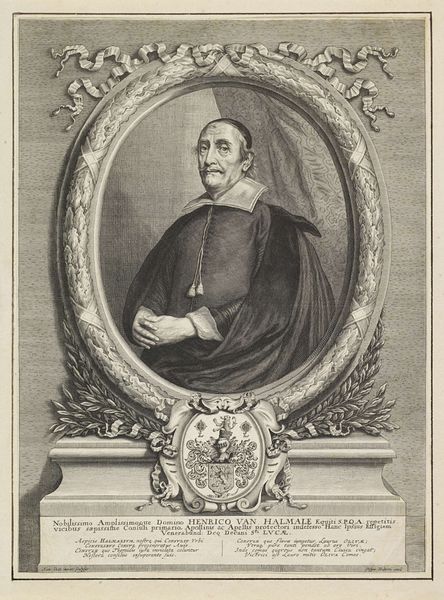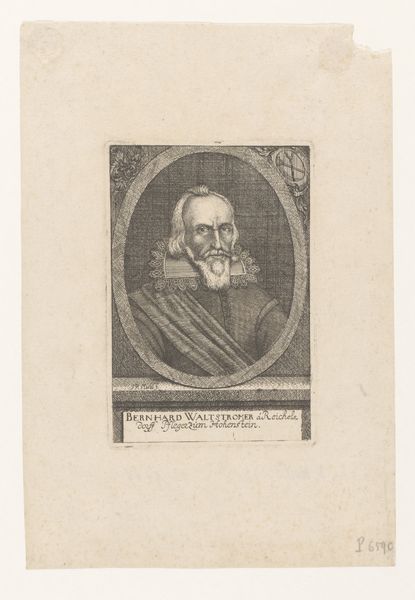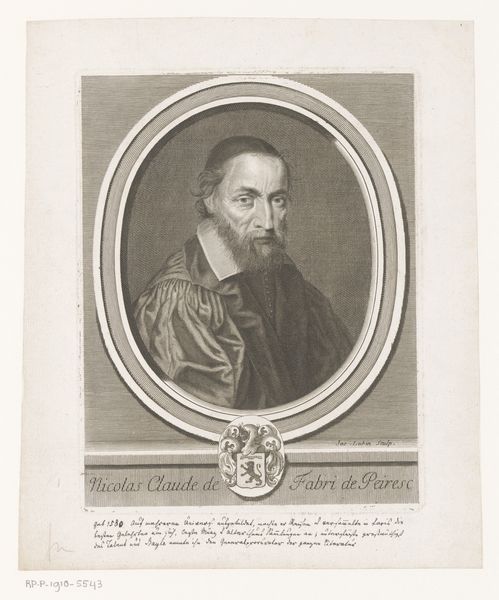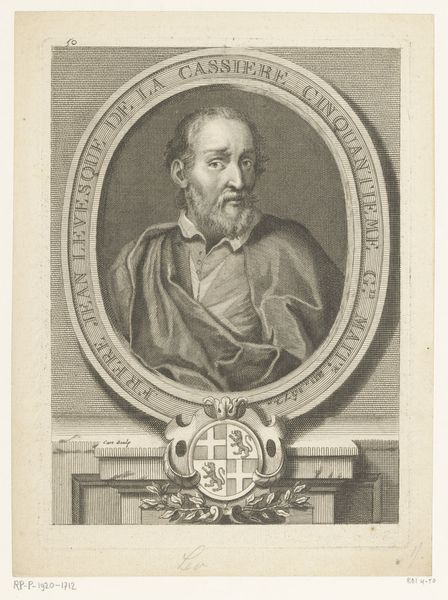
print, engraving
#
portrait
#
baroque
# print
#
figuration
#
line
#
history-painting
#
academic-art
#
engraving
Dimensions: height 257 mm, width 197 mm
Copyright: Rijks Museum: Open Domain
Editor: So, this is Jacques Lubin's "Portret van Henri Spondanus," an engraving dating from around 1696-1700. The level of detail achieved with lines alone is remarkable, it gives the portrait a striking sense of formality and seriousness. How do you read this piece, given its historical context? Curator: It’s interesting that you pick up on the formality. Consider the period: late 17th century, Europe grappling with religious and political upheaval. Spondanus, depicted here, was a prominent Catholic historian and Bishop. Lubin's engraving places him firmly within a visual tradition designed to project authority and intellectual rigor. What kind of impact do you think images like this had at the time? Editor: I suppose, the image becomes a tool for asserting legitimacy and perhaps countering dissenting voices, given the Reformation context. So the print isn't just a portrait, it's also about power? Curator: Exactly. Think about how access to images like this functioned. Prints allowed for the widespread dissemination of these authoritative portraits, bolstering Spondanus’s influence but, we must consider that power was not equally shared or perceived. It’s not just about his individual power; it’s also about how the Church reinforced and defended itself amidst profound change. Does knowing that influence your impression of the piece? Editor: Definitely. It shifts my focus from merely appreciating the artistry to understanding the strategic intent behind it. I hadn't thought about the role of art as propaganda in this way. Curator: It's a fine line, isn't it? What appears as reverence could also be read as control. This highlights the ongoing conversation we have with art across time and how critical interpretation helps us to unpack and contextualize those potentially oppressive structures that went unchallenged. It challenges our perspective. Editor: Absolutely. I’ll never look at a portrait the same way again. There's so much more to consider! Curator: And that's the most exciting thing about engaging with art history— it invites constant questioning and reimagining of power dynamics.
Comments
No comments
Be the first to comment and join the conversation on the ultimate creative platform.
